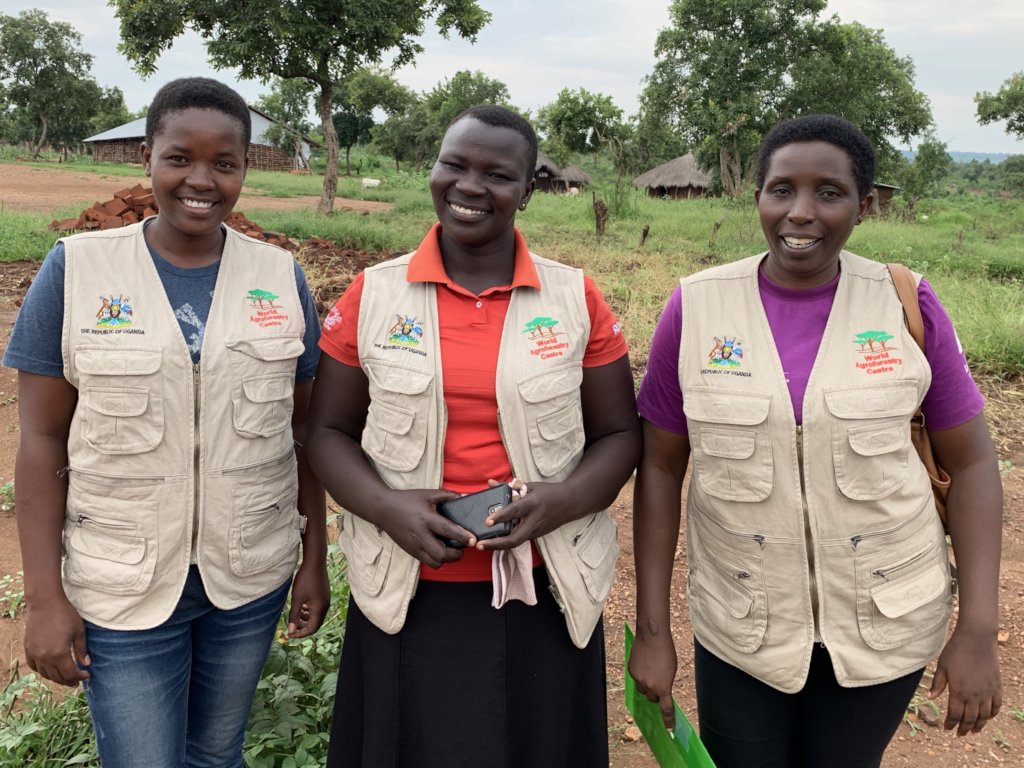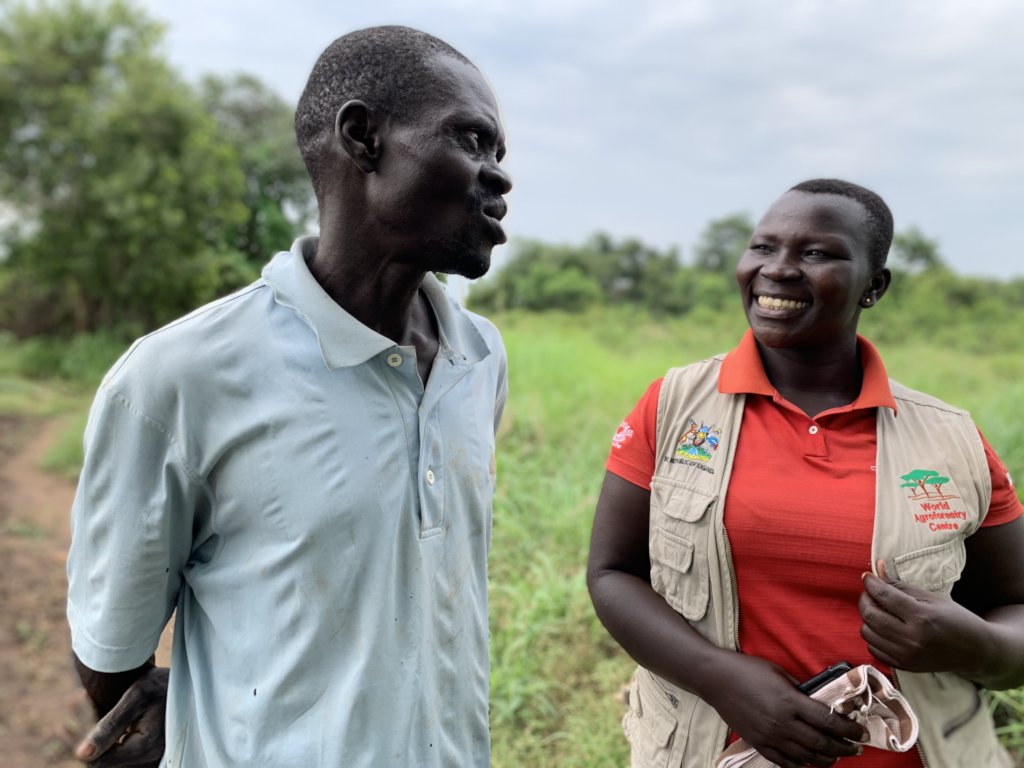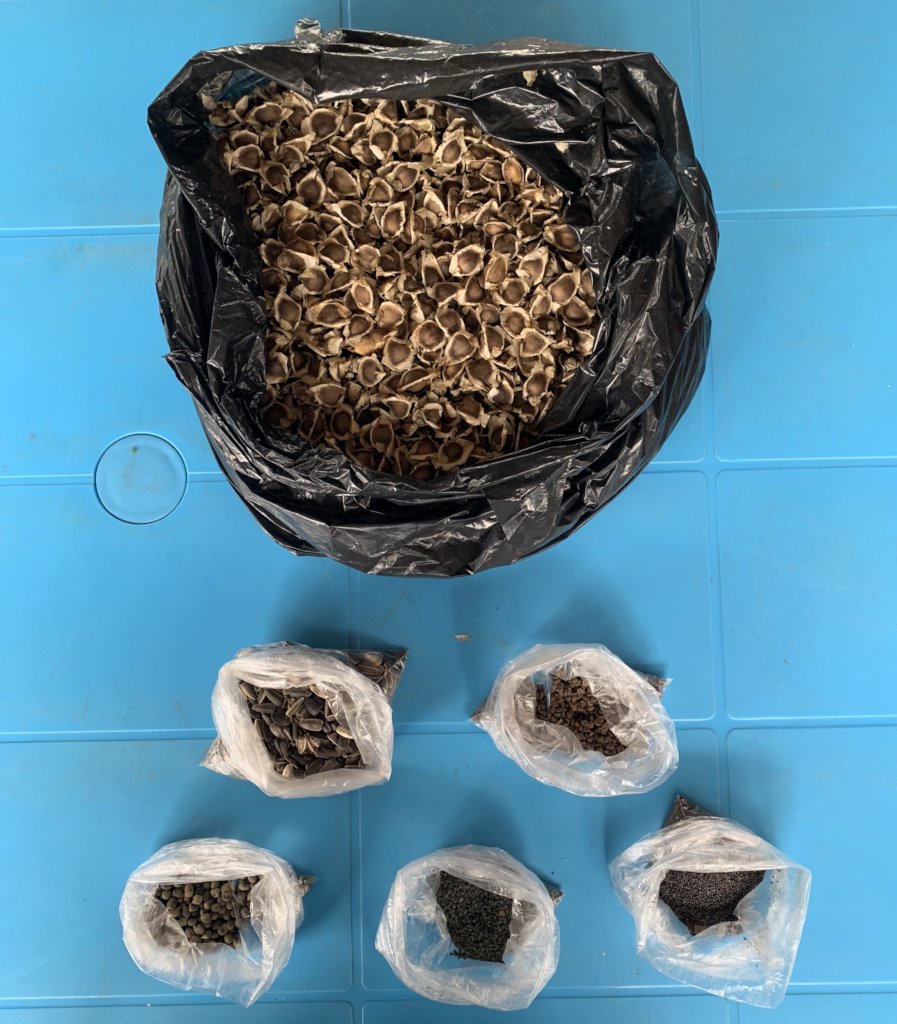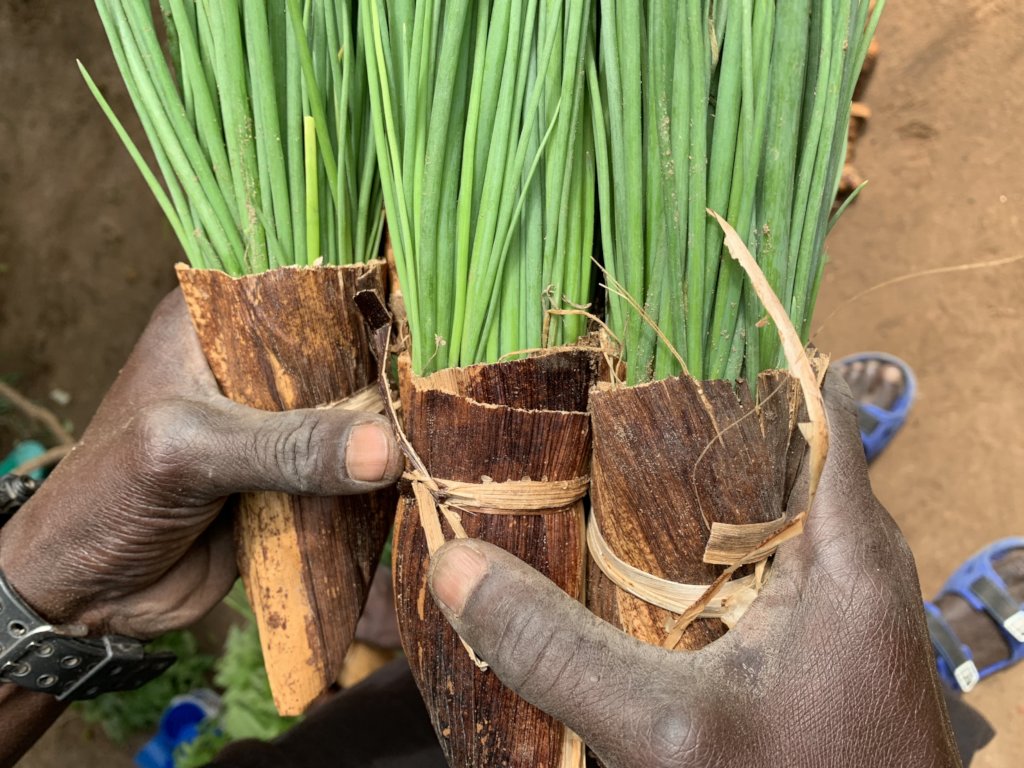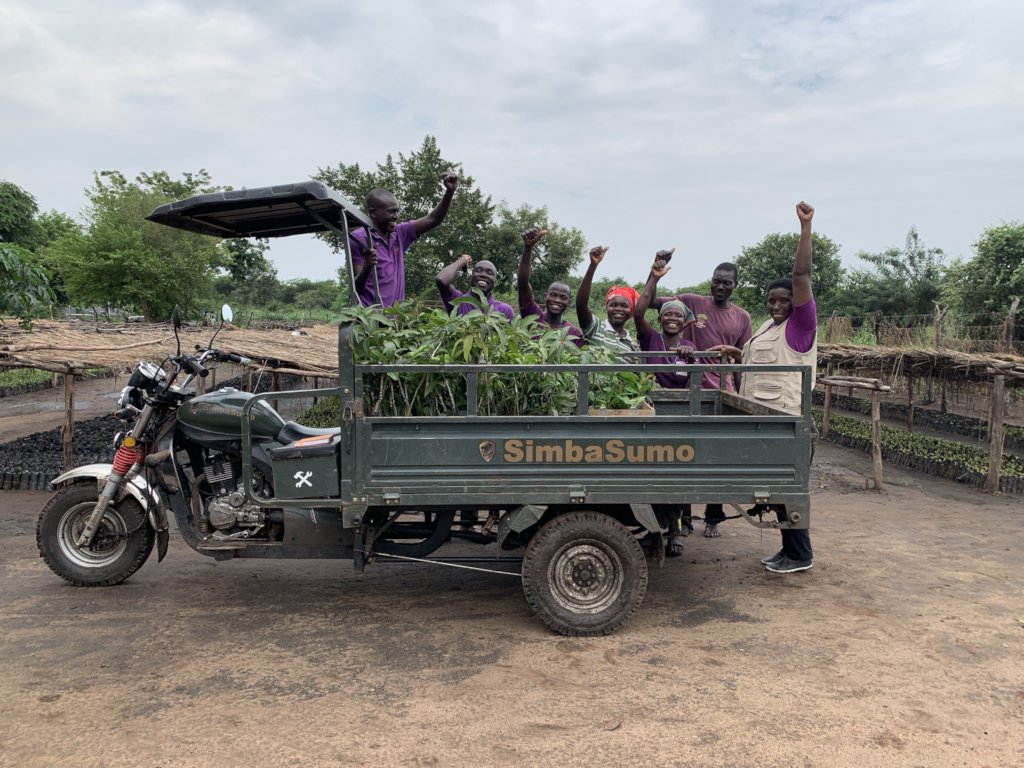By Cathy Watson | Chief - Program Development at World Agroforestry
Spirits are high in our agroforestry center in NW Uganda, despite the topsy turvy weather (heavy rains when it should be getting dry) and the arrival of new refugees, which indicates that fighting is still continuing in South Sudan.
One major cause of the high spirits is the motorcycle trailer that we unexpectedly bought with your donations. There's nothing flashy about it. But to us in the refugee setting, it looks like a Rolls Royce. We can now move around seedlings without pouring out funds on renting a pickup. It chugs along rather slowly. But it is solid and invaluable and has given us wings. Thank you very much.
Another source of joy is our much-improved gender balance. Whereas before the team had been all males, we now have three highly competent women, who I want to stress actually live in the refugee area. No going back to the town at night for them. From left to right in the photo: 1. Flavia, one of our three community-based facilitators (CBFs); she studied community development; 2. Gertrude, one of two supervisors, who follow up the CBFs; she has a diploma in forestry; and 3. Florence, who runs the entire project; she has a degree in animal husbandry and has worked for some good years with us on the fodder shrub Calliandra. Added to the feed of cows, the protein-rich leaves of this plant can raise daily milk production from about 3-5 liters to 15. And it improves the quality of manure, raising crop yields by improving the soil. It's agroforestry - the interaction of a woody shrub, with an animal, with annual plants: win-win-win-win-win.
When I reached the refugee zone last month, I sensed that the zeal to protect that environment has somewhat dimmed. Formerly, the UN and district had devoted themselves to marking trees that should never be cut with red paint and those that should be cut with caution and probably not at all with yellow paint. Two years into the emergency, the paint is so faded in most cases that it is barely visible and no deterrent at all to cutting. So we seized the situation by the scruff of its neck, took out two tins of pain we had invested in with your funds, and started marking key trees in and around the center.
Marking the trees was messy and fun but it was also entirely serious. Thank you for making the marking possible!
Note that it is rarely the very poor who fell important trees. It is very often people from outside the area who know that it is only lightly policed and regulated who take advantage of the situation.
We are currently distributing grafted mangoes to host community farmers to make orchards of 30 trees each. In the fourth photo, you can see Gertrude listening to a farmer, describing how he hopes to protect the young trees against free-roaming livestock that are likely to predate them. He is proposing making a small barricade of thorny Acacia branches. Goats, in particular, are a menace to young trees.
We had a visioning session where we talked about our aspirations for the center. The team wants a small vegetable garden and an agroforestry demonstration plot with pigeon peas, 200 kg of which were swiftly sent to us from another area of Uganda. The staff also wants to demonstrate the making of liquid manure and pest control concoctions made from plants to anyone who visits.
We immediately set to implementing these easy to implement ideas. We purchased seed for indigenous African vegetables from the market and as well as the seed for Moringa, a tree with edible leaves. We were touched in town to notice young people selling vegetable seedling plantlets wrapped in banana fiber and bought some too. No plastic! You can see them in the last photo.
With a goal of planting 120,000 seedlings, we are well on the way. Thank you for all your support!
Links:
By Cathy Watson | Chief - Program Development at World Agroforestry
By Cathy Watson | Project advisor and communications
Project reports on GlobalGiving are posted directly to globalgiving.org by Project Leaders as they are completed, generally every 3-4 months. To protect the integrity of these documents, GlobalGiving does not alter them; therefore you may find some language or formatting issues.
If you donate to this project or have donated to this project, you can recieve an email when this project posts a report. You can also subscribe for reports without donating.
Support this important cause by creating a personalized fundraising page.
Start a Fundraiser